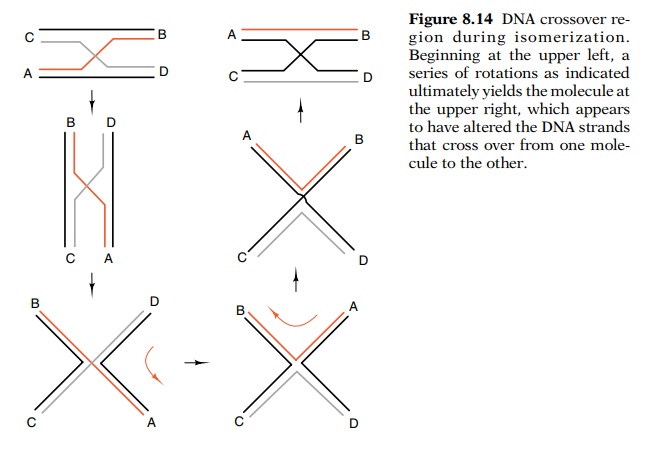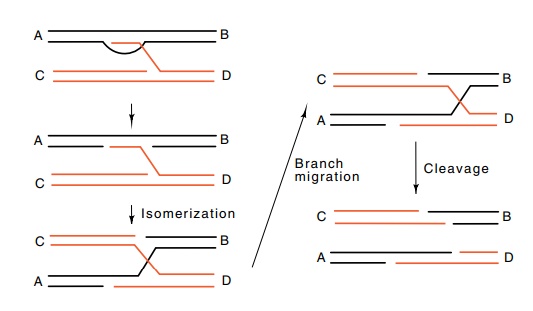Chapter: Genetics and Molecular Biology: Genetics
Genetics: Branch Migration and Isomerization
Branch Migration and Isomerization
Evidence mentioned in the previous section suggests
that DNA duplexes engaged in recombination are likely to involve heteroduplexes
consisting of one DNA strand from each parent. The problem we will address
here is one way these heteroduplexes might be formed and what steps might be
necessary to convert them to recombinants. As a glance at any genetics book will
show, there are many schemes consisting of more or less reasonable steps that
conceivably could be catalyzed by enzymes and that would ultimately lead to the
generation of genetic recombina-tion. We will outline one of these.
A single-stranded end of a DNA molecule can invade
a DNA duplex in a region of homology and form a DNA heteroduplex by displacing
one of the strands of the invaded parent. This can occur because

negatively supercoiled DNA is under torsion to
untwist, and thereby melt a portion of duplex. Displacement of a portion of the
original duplex by an invading single strand of DNA is energetically favored.
Thus, once this has started, additional nucleotides from the invading strand
are free to base pair because for each base pair broken in the parental duplex,
a new pair forms in the heteroduplex. Then the cross-over point is free to
drift in either direction along the DNA by this branch migration process.

Before proceeding with the recombination mechanism,
we must consider a diversion. For simplicity we will examine a double crossover
and then apply the principles to the situation described in the previous
paragraph. The strands that appear to cross from one duplex over to the other
are not fixed! What is the basis of this remarkable assertion? By a simple
reshuffling of the DNA in the crossover region, the other strands can be made
to appear to be the ones crossing over (Fig. 8.14). This reshuffling is called
isomerization. To understand, consider the more dramatic transformations as
shown in the Figure. These result in a change in the pair of strands that cross
from one duplex to the other. In reality, however, they amount to little more
than looking at the DNA

Figure
8.15 One possible pathway for genetic
recombination. A nick is con-verted to a crossover region, which isomerizes and
branch migrates, and finally the strands crossing over are cleaved.
Now let us return to the crossover mechanism. At
the one crossover stage, an isomerization yields a two strand crossover (Fig.
8.15). Branch migration followed by cleavage of these strands then produces a
cross-over between the two parental duplexes with a heteroduplex region near
the crossover point.
Related Topics